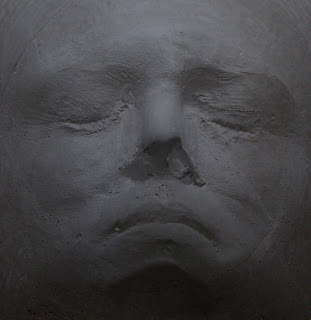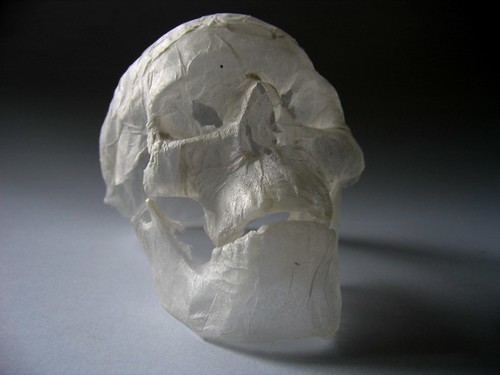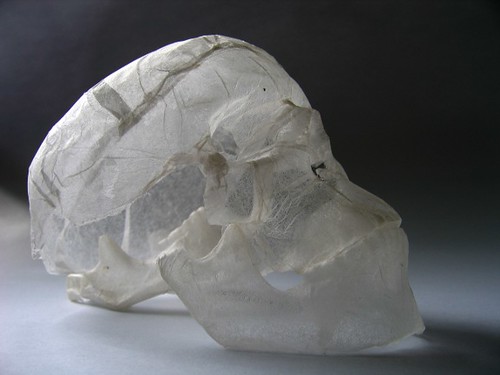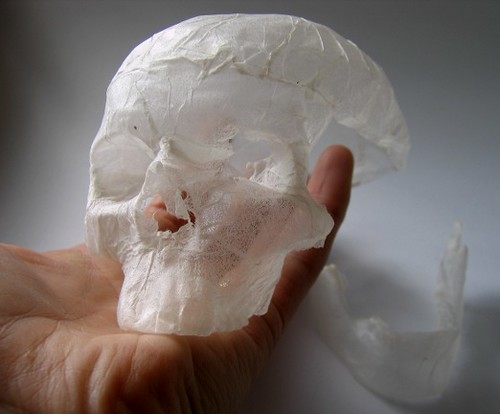I am interested in machines that tell you what it is to look, that make you aware of the process of seeing, make you aware of what you do when you construct the world by looking at it; but more as looking and seeing being a metaphor of how you understand the world.
William Kentridge in "Anything is possible" - documentary.
Feminism in the 21st century ? Woman self portraiture, fashion, cultures, sexuality and other related subjects. CLICK ON IMAGES FOR BEST QUALITY
Saturday 30 April 2011
Monday 25 April 2011
Elizabeth Winnel
"Working with multiple mediums, including ink, acrylic,
charcoal, pastel,spray paint and other materials,
Elizabeth Winnel’s self portraits,
while utterly figurative, are gorgeously abstracted."
Friday 22 April 2011
Monday 18 April 2011
Thoughts - reflexions ...
Since the last show where I exhibited a series of my "self-portraits in mirrors" and since the interview with Claire, I have been thinking about one important aspect in them : the fact that the main subject is not ME, but the mirror/reflecting surface. When taking the picture, in the reality, the camera takes the picture of the mirror itself.
I think that, for me, one of the most important idea in the questions Claire asked me is this one :
CT – so it’s the actual process of looking that you are trying to emphasise thorough the use of the mirror?
CSD – yes. I’m trying to understand something that cannot be understood.
And this is bringing me back to the residency "Eyes, windows to the soul" I did in 2010, which was following a period of research. Studying the process of vision, on different levels and trying to draw parallels between the physical and the psychological (or rather spiritual) aspects of vision ...
The physical particularities of the shop where I was working both helped me to emphasize some sides of this but also made it even more complex at the same time.
I think that, for me, one of the most important idea in the questions Claire asked me is this one :
CT – so it’s the actual process of looking that you are trying to emphasise thorough the use of the mirror?
CSD – yes. I’m trying to understand something that cannot be understood.
And this is bringing me back to the residency "Eyes, windows to the soul" I did in 2010, which was following a period of research. Studying the process of vision, on different levels and trying to draw parallels between the physical and the psychological (or rather spiritual) aspects of vision ...
The physical particularities of the shop where I was working both helped me to emphasize some sides of this but also made it even more complex at the same time.
Projection installation where a photograph of outside of the shop
is projected inside it.
Photograph through a window showing the indoor market
while a reflection is showing the window
and sky from inside the shop to the outside
To me, there is a direct link, from these images/installations to some of my most recent self-portraits.
A couple of nights ago, I also dreamed that I was by a wide container with water and that I understood that the next step was supposed to start taking pictures from under the water ... This lead me to take new types of images :
To me, there is a direct link, from these images/installations to some of my most recent self-portraits.
A couple of nights ago, I also dreamed that I was by a wide container with water and that I understood that the next step was supposed to start taking pictures from under the water ... This lead me to take new types of images :
Friday 15 April 2011
Self-portraits in Mirrors, 2011 - photographic installation for "With Myself in Mind" curated by Claire Taylor at the Crocus gallery, Nottingham
Installation made of 36 photos taken between 2004 and 2011
Interview with Céline Siani Djiakoua, by Claire Taylor (transcription)
Interview with Céline Siani Djiakoua, by Claire Taylor (transcription)
CT – First of all this exhibition is centred on the theme of identity, your sense of self and your artistic practice. So what brought you to come and practice in Nottingham?
CSD – Well I arrived in Nottingham in the summer from where I was living in Stoke on Trent . In Stoke I was doing a degree in Fine Art, part time. Once I had graduated I was quite lucky to get into some projects. Straight away I got offered a bursary from Longhouse (Multistory – West Bromwich) to do an Action Research. However, I felt like Stoke was not “feeding” me anymore, that I needed new challenges and also in my personal life I felt like I needed to move to a big city.
CT – Apart from this series, is most of your work directly based around yourself? What is it that particularly interests you about self portraiture?
CSD – That’s just one part of my work. I think the self portrait came as everyday practice. I write diaries and have been doing so since the age of 12. The main parallel between the two (self portraits in mirrors and diary practice) is the “reflection”. You have the reflection in the mirror and the individual reflection, the self -reflection. But also my primary interest lies in psychology and psychoanalysis because I got an MA in that, in France, and personally I did a lot of psychoanalysis. One of my hopes is to one day become a psychoanalyst.
CT – Your work seems to be made up of dozens of photographs in one series, in one body of work around one concept. What draws you to working in this way?
CSD – I didn’t know I would show that work, I didn’t even think of it as work. For me it was just everyday practice and a photographic exercise. It wasn’t a knowledgeable choice to create this work, it was just over several years, over seven years, I would take lots of pictures, most days. Now I have selected about 100 of those but I have taken many more than that.
CT – So what brought you to thinking about this body of work as art then because you said it was just like everyday practice and it wasn’t made with the intension of being an artwork. What changed your mind about it?
CSD –I’m a single mum of two so I can’t afford to not work from home. I do a lot of work and research at home. There’s a blog I have that is called ‘Rebecca’s Fashion Magazine’ and it started as a blog about high fashion. I had never been interested in that except for the aesthetics of it and I wanted to know more about that. It grew out of feminism and what feminism means nowadays, so my interest developed in feminism and self-portraiture. I started to use the pictures as references so now, at this point, it really makes sense to show them. Another thing is that my confidence grew. I don’t call myself a photographer because I don’t have training in photography but I use photography in my visual work and my confidence in my photography skills has grown. I have also had some good positive feedback about my photos.
CT – So what does interest you in photography if it’s not the technical side of things?
CSD – For the Self portraits in Mirrors the photography is a good way for me because it is as if I can have a camera instead of eyes. I also like that the self-portrait can be very spontaneous and instant. I like the spontaneity of taking the work and seeing something beautiful – I just click and it’s there...
CT – so it’s the documentary aspect that appeals to you?
CSD – Yes collecting images. But there’s much more to photography than that. What I really like about the picture is that, even though it is spontaneous, the more you do the more you get trained. I mean, the self-portraits that I do, I have complete control over because I’m watching myself in the mirror. Decisions are made about what frame is the best and what light, what colours – it’s a balance of all of that. The thought side is very important...
CT – I can see that they are actually very considered images. As you say the portraits span quite a long time frame – seven years? But it’s not about documenting seven years of your life. Could you talk about that a little?
CSD – Yes I didn’t see it as a documentary of my life. It is just a collection of precise moments. At that moment, what do I look like, what am I thinking? What is my mood? Every second I’m changing. The self-portrait makes sense of your identity, which is made of fluctuating moods. You can’t say this is “me”.
CT – so to just show one image couldn’t explore or show your identity?
CSD – never, not even 10, 000. I really think if you want to show yourself in this way the photograph is really not the best way. Using video would be better because the video is live and shows movement. Movement shows so much more of you than a flat, 2-D image. Photography is a construction and it can be used in a very clever way to say something. I take spontaneous pictures but there’s an awareness of what I want to give so there’s a tension between the two.
CT – In your artists statement you associate identity as how people see us. Could you elaborate on the importance of how people view you in relation to your identity?
CSD – That’s difficult, especially because I have backgrounds in Psychology and Psychoanalysis so there’s a lot of studies in that area. I’m interested also in Phenomenology , which looks at how you experience the world, right now, through your senses and the awareness you have of that –that you are not just a body and a mind separated but you are more than that. You have a position in space. You are in a situation, you are surrounded by people, buildings, you can’t separate yourself from that...
CT – so you believe identity is not from within? It’s affected in so many ways by society and experiences.
CSD – Well, it is very complex. And you were given a body when you were born. I’m looking for beauty and I think it very important to start with yourself. It’s important to look after yourself and to try to get the best, I mean depending on what you want to communicate. It’s important to look for beauty in yourself. What I mean by beauty is not so much what follows the stereotypes we are surrounded by but more finding harmony and having a kind and balanced relationship with your body and your appearance.
CT – Although your work may appear like snapshots you were talking about how they are actually considered images. Could you discuss the construction of your images?
CSD – I think there are some constants aesthetically. I am obsessed with circles and frames. I like a balance of colours. What is interesting when I was looking at the pictures is that, because it is me and it shows how I dress and they are taken in my house, my aesthetic taste and design is shown. The balance of shapes colours, light – you can find it in my images, in how I dress and in my house.
CT – There are multiple reflections of your personality then by showing these?
CSD – yes definitely
CT – Through the images you are choosing how people see you and therefore constructing an identity. We spoke a little about this but could you talk about the truth that you’re communicating or choosing not to communicate through these photographs?
CSD – They are true in the moment they are taken. I take it like that because that’s what I want to show. So I’m being true to myself in that sense. But it is all about communication. Some of the photographs are very aesthetically built and they are beautiful and could be for fashion magazines. But they are also actually addressing that element of truth. The mirror is a very important element. The image that you see is not the direct image taken on the subject. It’s a reflection. The idea of the truth – I was saying first there is a layer and there are lots of layers. The mirror is a layer but you may not think about that when you look at the picture. I like that you can always see the camera. Another very important thing is the mirror as a tool. Sometimes you are very aware that the image of me is through the mirror because you can see the frame and you can see some of the wall. There are some images that are very important in the series - where the mirror is a dirty mirror. There’s one specific photograph which is very beautifully balanced with the light and I look lovely as a model, but the mirror is dirty. I am showing the process. I’m showing that I’m taking a picture of myself. There is this multilayered complex process. By showing the dirt on the mirror I’m also saying ‘don’t be fooled. That’s where you should look. You should question these things
CT – you are helping the viewer realise it’s a construction...
CSD – yes and that images are only images and not the truth at all
CT – We’ve touched on the use of mirrors as a core aspect of your work. Mirrors do carry a weight of significance within art history. It’s used as a tool. Are there any artist or concepts that you are applying by the use of the mirror?
CSD – for me, being interested in Psychoanalysis, Lacan and his theory about the ‘mirror stage’ is a core reference in the construction of the identity. It’s really interesting to read and consider but since then there has been a lot of development around concepts of the body and the image. So the mirror in Psychoanalysis and the body is more than Lacan originally said. That is my big reference. As a visual tool it’s a very interesting thing to use that I can’t quite grasp. I have done video works and performances about space and frame. I was filming myself but looking at myself at the same time in a TV frame. What I was doing was drawing with my fingers the border of the frame. So reflections as a tool are very interesting and I will keep working on that. There is an analogy and that is another big part of the research for my bursary – I called the project “Eyes, windows to the soul”. The interesting thing with the digital image is that you can see the result while taking the picture. There’s a physical side of how the reflection works and that is my parallel and metaphor. I was interested in using reflections and filming where you have control of your body. When you think about your vision and what you experience through your eyes in a Phenomenological approach, it’s so complex that when I read the writing of Merleau-Ponty (that’s some writing I particularly like) I can’t take in more than one page because of its density. It touches upon something that you can’t quite grasp or understand. Seeing is not just a physical thing. The example he uses is, when you think of your two hands touching – you feel that in both one and the other. When your eyes are looking at the outside world, the light is going into the eye. You cannot just say you are looking at it – you are touched by the world around you. That is complex. And now when you think of someone looking at you and you see the gaze of that person on you it gets rather complex.
CT – so it’s the actual process of looking that you are trying to emphasise thorough the use of the mirror?
CSD – yes. I’m trying to understand something that cannot be understood.
CT – we have discussed your physical representations in the photograph but I feel that something we need to look at more is the communication of personality through the photographs. Your inner self is revealed and how have you done this?
CSD – I think it is more in the action and experience of taking the picture. It’s a very specific moment.
CT – are you trying to create an attitude through your work? Are you creating a certain position or atmosphere in your work?
CSD – I can say that I built the picture on the moment. I never think about taking the photograph before I take it
CT – You spoke a little in your artists statement and again today about how you write diaries which work as a parallel to your work. How do you feel the relationship between image and text works?
CSD – that is something I have never explored. There is no purposeful thought parallel between the image and the diaries. It is just instead of being a written practice it’s a visual practice. I can remember by looking back at the images and I can remember the mood and this is reflected through the diary but the connection is not what I am interested in. Now I can see the diary and the portrait are different ways of doing things. When I was a child and a teenager, and even after, I liked the practice of writing dairies. Anais Nin said; ‘my writing is my drug, my opium’, and for me that was the relationship I had with my diaries. They were a way to describe something of the world but also I was living in a bubble. I was not living in the real world at all. I managed to get out of that bubble and my relationship with the diaries changed. I think that can be said of the self portrait. I started taking these images and I was not sure why I was doing that and I was uncomfortable because I didn’t know why. I didn’t want people thinking ‘she’s narcissistic’ and that’s it, it was more than that, but I didn’t know what. Because of the quantity, it is more than that. I have noticed lately I have become more interested in what is in my background, rather than outing myself in the middle of the photo so it seems my practice is shifting.
Labels:
aPHOTO,
Interview,
Reference "Self-portraiture"
Wednesday 13 April 2011
Dark Continent, 2007
Dark Continent, 2007
"The phrase "Dark Continent" first appeared as evocating Africa in a colonialist context. It was then used by Sigmund Freud to refer to women's sexuality and later discussed by feminist intellectuals, critizising the passive role associated with feminity. In their early revendication, feminists also tended to establish a parallel between the women liberation and the liberation of the Black people from oppression.
On Gilberto Gil's Brazilian music, the present video piece evocates this multilayered subject. In a humoristic and sensual manner, the dance also questions the duality between different types of languages : male and female, mother tongue and foreign language, verbal and non verbal communication.This is a struggle and a longing for reconciliation, for the Other to be recognized as part of oneself."
cockroach mask ideas
one idea ...
The masking-making process I am choosing will include making a plaster 3D reproduction of my face, which I could use indefinitely to produce whatever masks I want. I am thinking of exploring making masks with very basic and unusual materials and use them in self-portraiture or "fashion-style" photographs ...
Subscribe to:
Posts (Atom)


















































